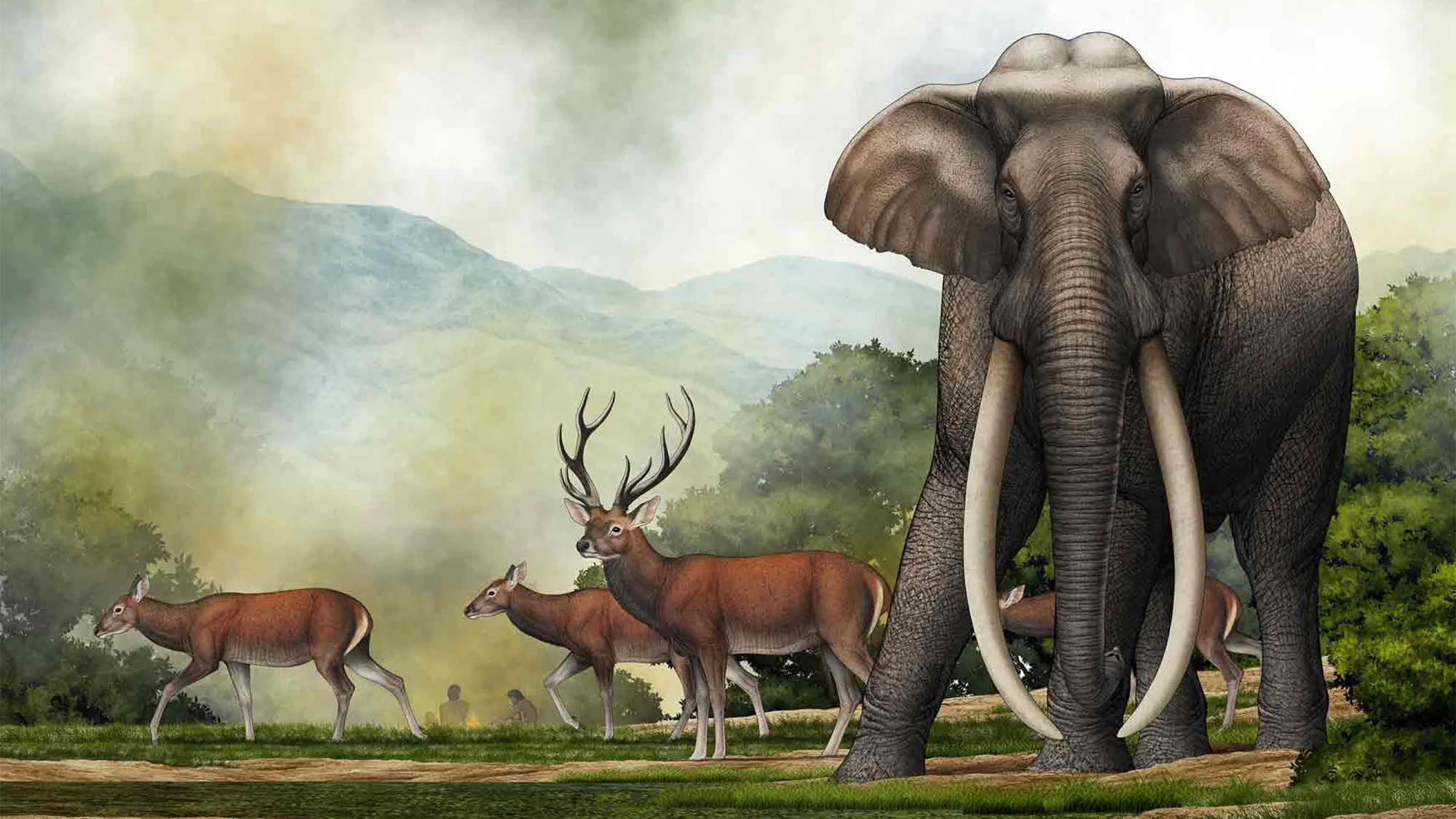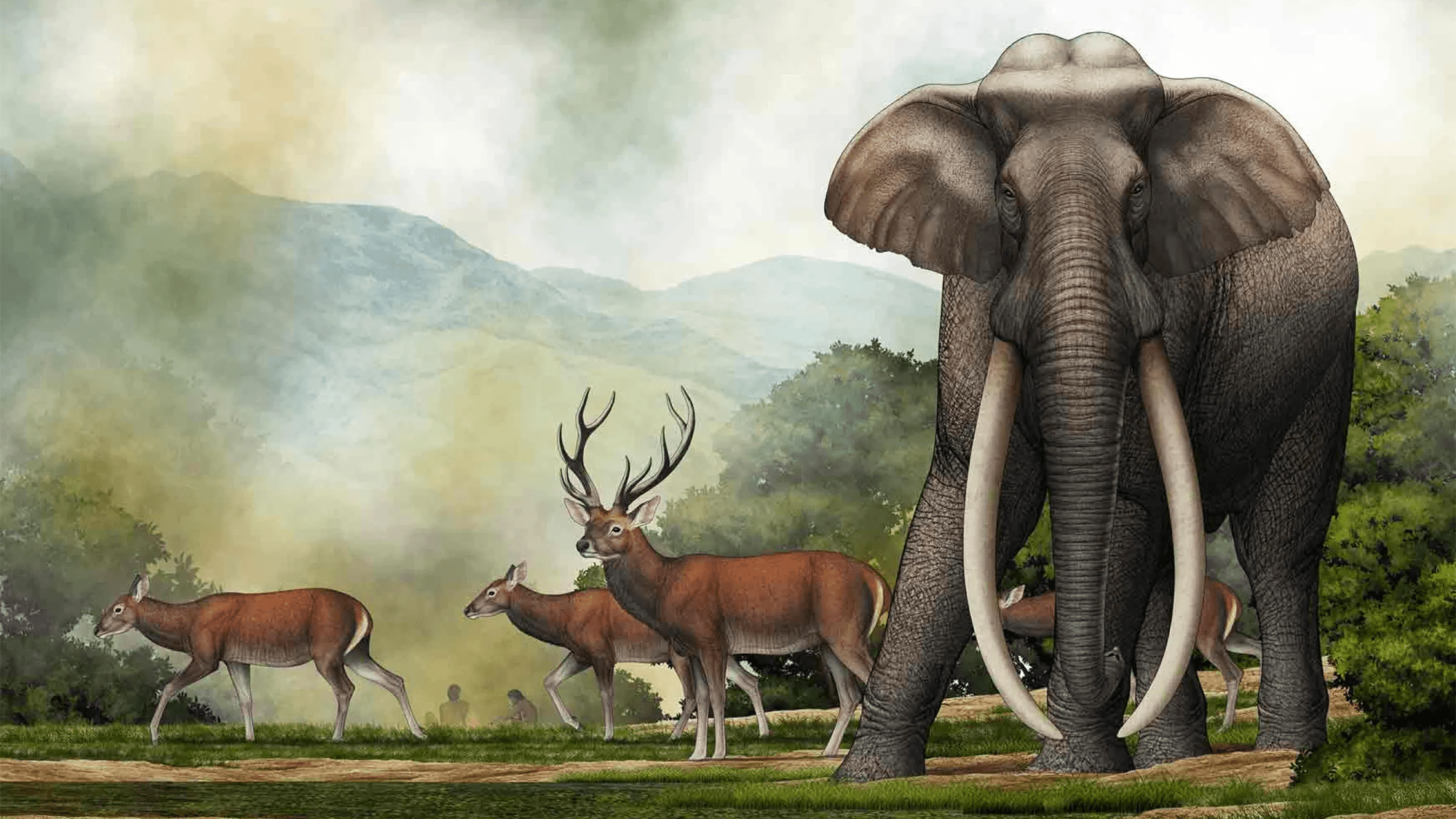
Over two decades ago, a team from the University of Jammu uncovered the giant fossilized skull of an extinct elephant species in India’s Kashmir Valley. The remains were uncovered along with 87 basalt stone tools used by prehistoric humans. According to a new analysis, the skull belongs to a mysterious type of elephant called Palaeoloxodon. These tools also played a key role in helping paleontologists identify the species. The findings are detailed in a study published October 11 in the Journal of Vertebrate Paleontology.
“From the general shape of the skull, it’s quite apparent that the elephant belonged to Palaeoloxodon, or straight-tusked elephants, among the largest land mammals that ever lived,” Steven Zhang, a study co-author and paleontologist from the University of Helsinki in Finland, said in a statement. “Yet what’s puzzled experts for some time is that the Kashmir skull lacks a thickened, forward-projecting crest at the skull roof which typifies other Palaeoloxodon skulls found in India.”
[Related: Humans likely wiped out Cyprus’ tiny hippos and elephants in record time.]
Fully grown adult Palaeoloxodons were about 13 feet tall and weighed over 2,000 pounds, making them a bit smaller than today’s living elephant species. Palaeoloxodons first evolved in Africa roughly one million years ago and their early species had a narrow, convex forehead and underdevelopment of the skull crest. The later specimens have a very wide-flattened forehead that is often associated with a thick crest that juts forward from the roof of the skull.
In the years since this skull was uncovered, determining the Palaeoloxodon’s position on the evolutionary tree of elephants and if the development of the crest at their skull could set them apart has been controversial among paleontologists. Some recent research found that the Palaeoloxodon skull crest became more prominent with developmental and sexual maturity. If scientists can examine their teeth to tell how old the animal was when it died, it would be possible to compare skulls from individuals at similar levels of maturity.
“From the size, the wisdom teeth and a few other telltale features of the skull, it is evident that the animal was a majestic bull elephant in the prime of its life, but the lack of a well-developed skull crest, particularly in comparison with other mature male skulls from Europe and from India, tells us we have a different species on our hands here,” said Zhang.
The team behind the new study noticed how the Kashmir skull’s features actually fit best with another obscure skull. This one was found in Turkmenistan and studied in the 1950s and was proposed to represent a distinct species, Palaeoloxodon turkmenicus. The Turkmen skull also doesn’t have a crest on its skull roof and has features that are similar to a well-known European species called Palaeoloxodon antiquus. According to the team, this led a number of experts to suggest that the Turkmen specimen is a diverging individual from the European species Palaeoloxodon antiquus.
“But with the Kashmir skull added to the mix, it becomes clear now that the two specimens can be theorized to represent a distinct species that we previously knew very little about, with a broad distribution from Central Asia to the northern Indian Subcontinent.” study co-author and Florida Museum of Natural History paleontologist Advait Jukar, said in a statement.
[Related: What prehistoric poop reveals about extinct giant animals.]
To take a closer look, the team measured protein decomposition in the tooth enamel of the Kashmir Palaeoloxodon skull. They also examined the stone tools that were buried with the elephant’s remains. From the teeth and tools, they concluded that the Kashmir skull dates to the Middle Pleistocene period, roughly 300,000 to 400,000 years ago. This makes it a similar age to the Turkmen skull and supports the belief that both represent a species that is distinct from other Eurasian Palaeoloxodon. While it’s clear that these prehistoric humans used the elephant in some way, there was no evidence of hunting or butchering it.
According to the team, with a wide, flat forehead and only the faintest trace of a skull crest, P. turkmenicus might represent a poorly-known missing link that fills an evolutionary gap in our understanding of how these prehistoric megaherbivores evolved.

